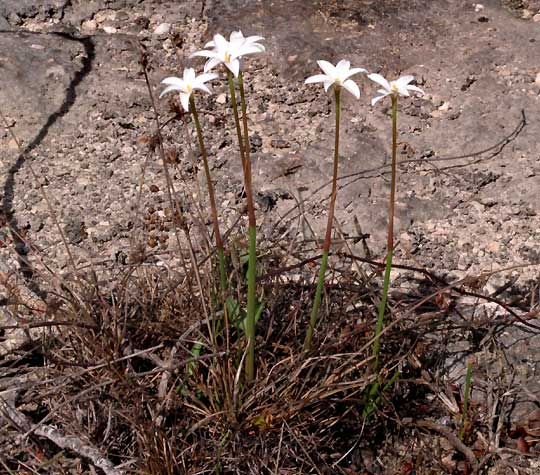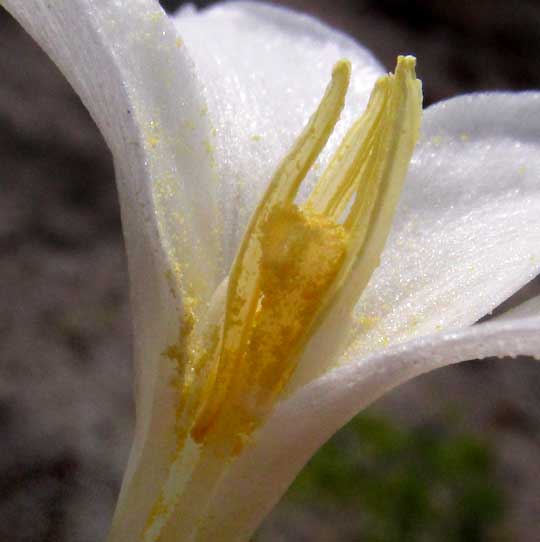Excerpts from Jim Conrad's
Naturalist Newsletter
from the June 14, 2015 Newsletter issued from Río Lagartos, on the Yucatan Peninsula's northern coast (~N21.60°, ~W88.16°), Yucatán state, MÉXICO
RAIN LILIES
A week after the first rain broke our long, hot dry season, Rain Lilies appeared, exactly as they did in hot, arid southwestern Texas during our stay there. Moreover, the plants looked the same. You might find it interesting to review the Texas Rain Lily, Zephyranthes chlorosolen, at www.backyardnature.net/n/h/rainlily.htm.
Now look at the Rain Lilies that popped up from very thin, soil atop limestone bedrock here, at the edge of the mangroves, shown below:

Closer up we see that, just like the Texas species, this lily's flower tube is extremely long and slender, with its attachment to the stem marked only by a slight bulge where its base is embraced with a brownish spathe, as shown below:

When distinguishing the various rain lily species up north, it was important to notice whether their stigmas emerged from the corollas' mouths, or stayed well within the corolla tubes. A close-up showing that the roundish stigma head of our flower emerges from the corolla tube, just like the Texas species shown above, is shown below:

In fact, this turns out to be the same species we had in Texas, ZEPHYRANTHES CHLOROSOLEN, though our Yucatan population seems to consist of a tiny island of them just along the Peninsula's coast. The main population occurs in the south-central US, mostly in Texas and arid northern Mexico, with our Yucatan plants being "disjunct" populations. Who knows how this arid-land-loving plant made the jump across the Gulf of Mexico?
In much of Texas this species is fairly common, at least after certain good rains, but here our populations are regarded as at risk because only four populations are known here, and the populations are widely fragmented. They are not listed for the Biosphere Reserve, so this is a good find.